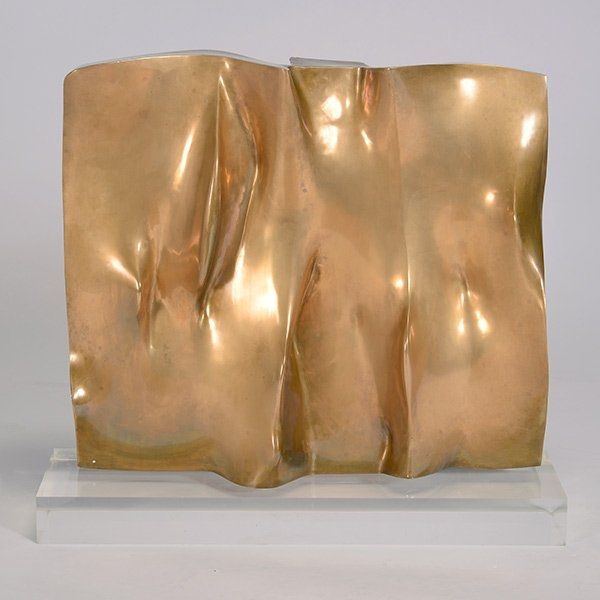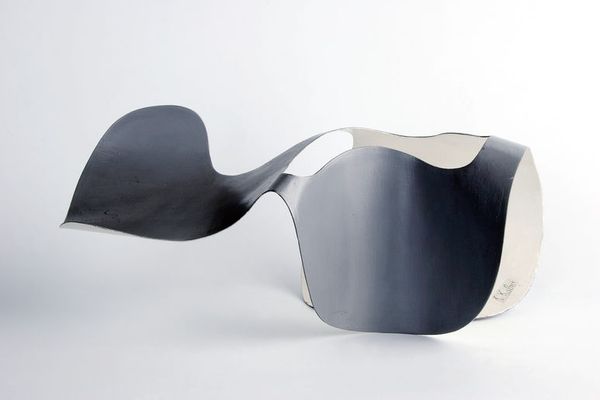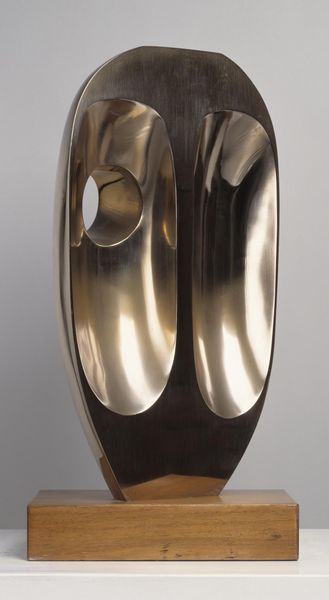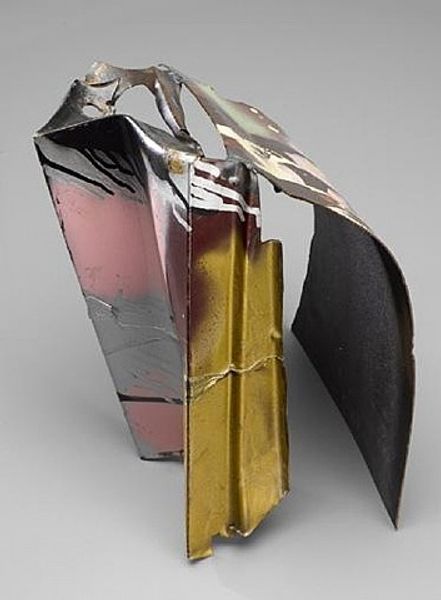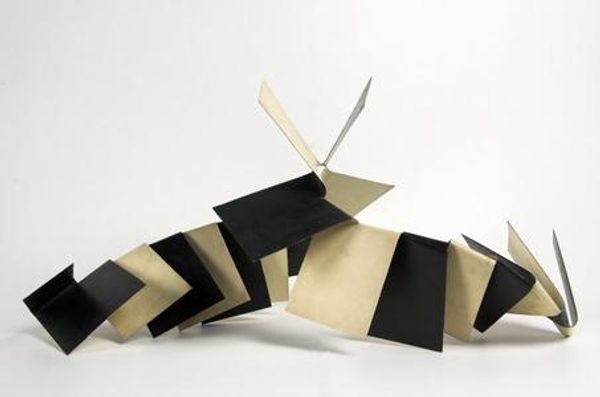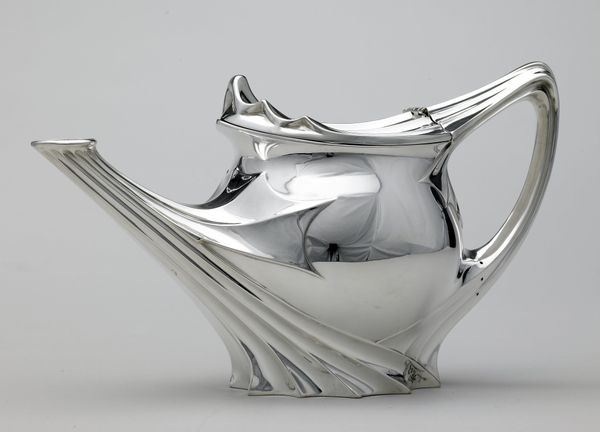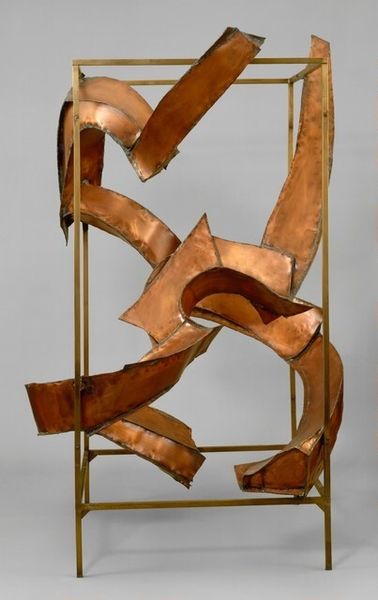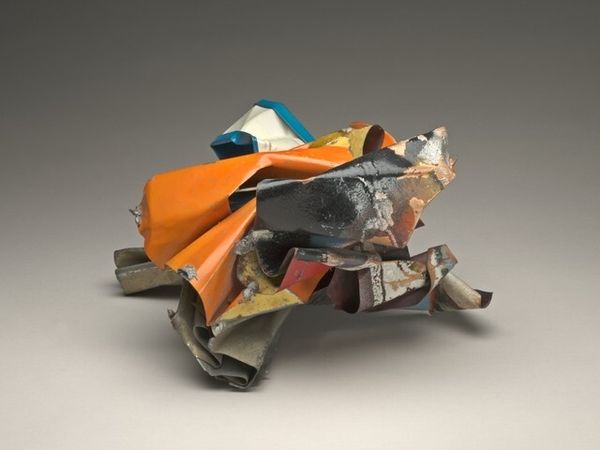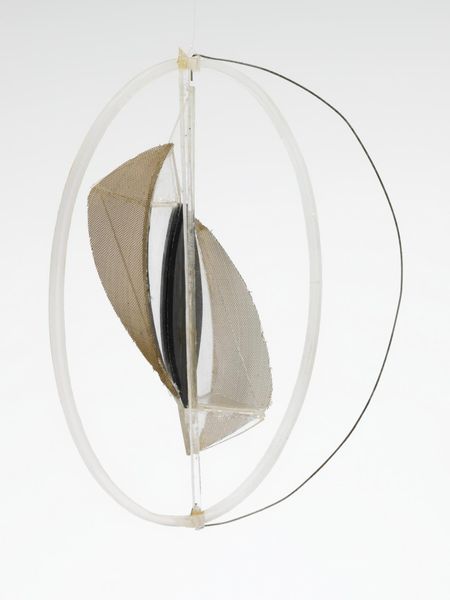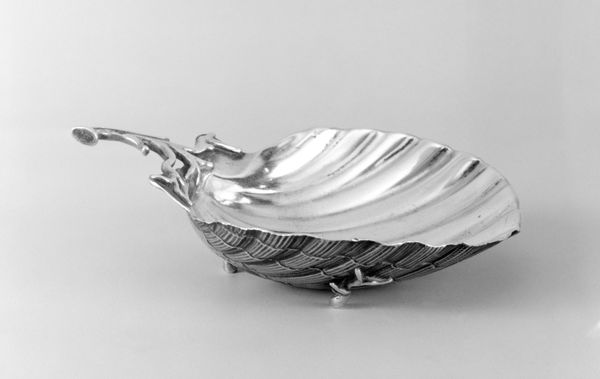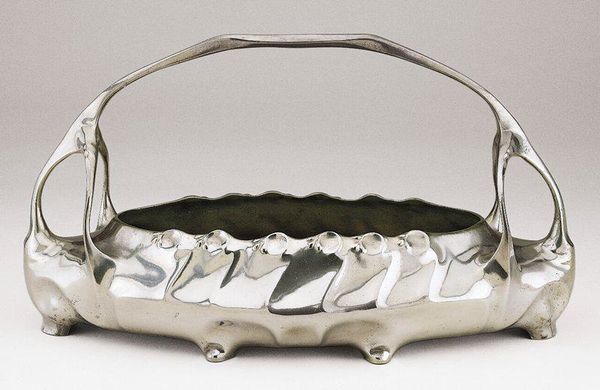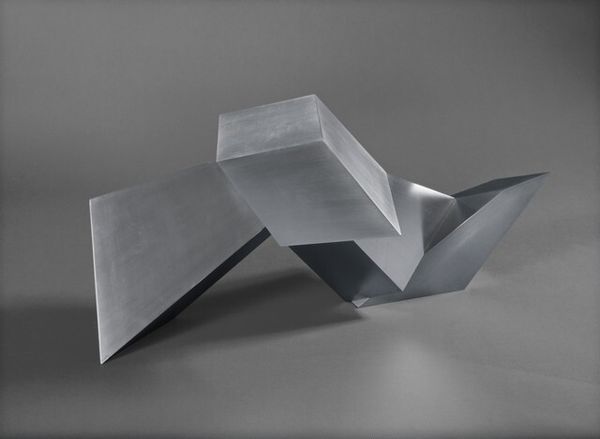
metal, sculpture
#
arte-povera
#
metal
#
geometric
#
sculpture
#
abstraction
#
metallic
#
modernism
Copyright: Gio Pomodoro,Fair Use
Editor: Here we have Gio Pomodoro's "Forma distesa," created in 1963 using metal. I find the fragmented structure particularly striking – it almost looks like two halves of something once whole, now separated. How do you interpret this work, especially considering its place in art history? Curator: It's interesting you point out the fragmentation. Considering Pomodoro’s "Forma distesa" through a historical lens, particularly within the context of the early 1960s, invites a dialogue about post-war reconstruction, both physical and psychological. The metallic sheen, divorced from functionality, becomes almost confrontational. What statement could it make about societal fractures in post-war Italy? Editor: So, it's less about the pure form and more about what that form communicates about the societal atmosphere at that time? Curator: Precisely. Arte Povera was a powerful counter-narrative. The use of mundane materials stripped of their market value challenges the art world's commercialism and invites discussion about the role of art in public discourse. In your view, how effective is "Forma distesa" in conveying this counter-narrative to today's audience? Does it still resonate? Editor: It certainly makes you think about what's being represented. The title suggests something at rest, but the broken form conveys something different, something disrupted. I guess it still raises questions about stability, even now. Curator: Indeed. And its public display invites those very questions into the social sphere. Pomodoro transforms material into a commentary, challenging viewers to engage with history and its ongoing repercussions. Editor: I see the sculpture now with more complex layers that tell so many stories. Thank you! Curator: My pleasure. Art history unveils such rich tapestries of meaning.
Comments
No comments
Be the first to comment and join the conversation on the ultimate creative platform.

